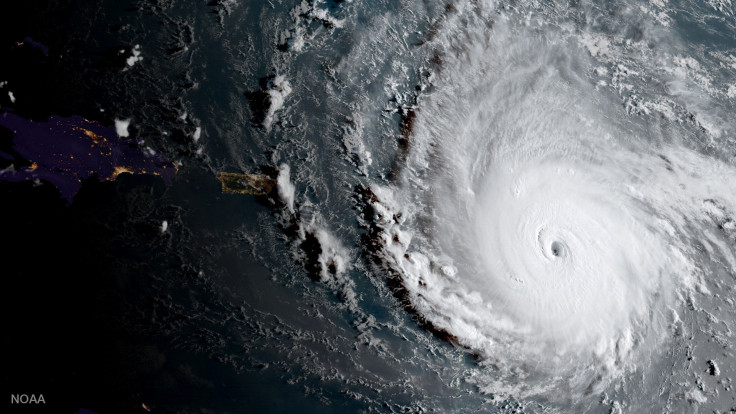What Does Category 5 Mean For Hurricane Irma And Why Isn't There A 6?

As hurricane season ramps up, what is a Category 5? Why is there no Category 6?
Hurricanes are measured on the Saffir-Simpson scale, which was first developed in 1971. It was developed by civil engineer Herbert Saffir and meteorologist Robert Simpson who was running the National Hurricane Center (NHC) at the time. It was introduced to the public in 1973. The scale at first incorporated other factors, but now refers simply to how fast the wind is blowing.
A Category 5 hurricane means that it has winds blowing 157 miles per hour or more.
“A high percentage of framed homes will be destroyed, with total roof failure and wall collapse. Fallen trees and power poles will isolate residential areas. Power outages will last for weeks to possibly months. Most of the area will be uninhabitable for weeks or [more],” reads the NHS’s description of a Category 5 storm.
There is no Category 6 for several reasons, the main being that a Category 5 is so destructive, that even if there was an additional category, it wouldn’t make a huge difference. Even as Hurricane Irma reached wind speeds of 185 miles per hour, into what is one of the most powerful Atlantic storms ever, it is still a Category 5.
“If that extreme wind sustains itself for as much as six seconds on a building it's going to cause rupturing damages that are serious no matter how well it's engineered. So I think that it's immaterial what will happen with winds stronger than 156 miles per hour. That's the reason why we didn't try to go any higher than that,” said Simpson to Live Science in 2005.
Additionally, Category 5 hurricanes used to be rarer, warmer seas caused by global warming can make hurricanes stronger. There have been 32 Category 5 storms since 1924 when they could be accurately measured up to that strength.
Hurricanes can also cause more damage than their categories suggest because of flooding and storm surge. Hurricane Harvey reached a Category 4 (130 miles per hour to 156 miles per hour) by the time it made landfall, but then slowed down to a tropical storm (below 74 miles per hour) as it hung over Texas. The rainfall was one of the most damaging aspects of that storm.
NHC considers hurricanes between Category 3 and 5 to be major.
© Copyright IBTimes 2025. All rights reserved.





















